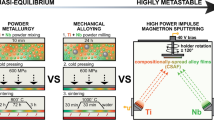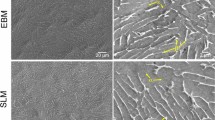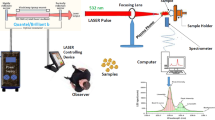Abstract
Femtosecond laser ablation inductively coupled plasma mass spectrometry was used for the quantification of 23 metallurgical relevant elements in unalloyed, alloyed and highly alloyed steels, and super alloys. It was shown that by using scanning mode ablation with large ablation spot diameters (250 μm), stable and representative sampling can be achieved for the majority of elements, except for bismuth and lead. For Bi and Pb up to 46%, temporal relative standard deviation (TRSD) was encountered, whereas for most other elements, the TRSDs were below 10%. Calibration with matrix-matched and non-matrix-matched standards provided similar agreement within the uncertainty of the certified values. However, the non-matrix-matched standard-based quantification was more influenced by interferences rather than ablation- or excitation-related matrix effects. The method was validated using 34 certified reference materials. 52Cr, 51V, or 55Mn were used as internal standards due to the fact that the Fe concentration was not certified for the majority of reference materials. The determined concentrations for major and minor elements indicate that the total matrix internal standardization (100 wt.%) is applicable, which requires no knowledge about the steel samples prior to analysis.

CRM chips embedded in epoxy resin


Similar content being viewed by others
References
Melford DA (1966) J Iron Steel Inst 204:495
Zou Z, Grinder O (1982) Scand J Metall 11:79–84
Mayer G, Clark CA (1974) Metall Mater Technol 116:491–501
Wiltsche H, Brenner IB, Prattes K, Knapp G (2008) J Anal At Spectrom 23:1253–1262
Montaser A, Golightly DW (1992) Inductively coupled plasmas in analytical atomic spectrometry, 2nd edn. VCH, New York
Wiltsche H, Brenner IB, Knapp G, Prattes K (2007) J Anal At Spectrom 22:1083–1088
Burke KE (1972) Analyst 97:19–28
Koch J, Wälle M, Pisonero J, Günther D (2006) J Anal At Spectrom 21:932–940
Longerich HP, Jackson SE, Günther D (1996) J Anal At Spectrom 11:899–904
LAMTRACE 2.16, Jackson SE (2005) Department of Earth and Planetary Sciences, Macquarie University, Australia
Günther D, Hattendorf B (2005) Trends Anal Chem 24(3):255–265
Granfors G, Gustavsson I (2001) J Anal At Spectrom 16:1439–1441
Coedo AG, Dorado T (1995) J Anal At Spectrom 10:449–453
Yasuhara H, Okano T, Matsumura Y (1992) Analyst 117:395–399
Usero R, Coedo GA, Dorado MT, Padilla I (2009) Appl Spectrosopy 63:859–864
Russo RE, Mao XL, Gonzalez JJ, Mao SS (2002) J Anal At Spectrom 17:1072–1075
Mozna V, Pisonero J, Hola M, Kanicky V, Günther D (2006) J Anal At Spectrom 21:1194–1201
Heinrich CA, Pettke T, Aigner-Torres M, Audetat A, Günther D, Hattendorf B, Bleiner D, Guillong M, Horn I (2003) Geochim Cosmochim Acta 67(18):3473–3496
Bian Q, Garcia CC, Koch J, Niemax K (2006) J Anal At Spectrom 21:187–191
Bian Q, Koch J, Lindner H, Berndt H, Hergenröder R, Niemax K (2005) J Anal At Spectrom 20:736–740
Acknowledgments
The authors wish to acknowledge the support of Boehler Edelstahl GmbH, Kapfenberg, Austria.
Author information
Authors and Affiliations
Corresponding author
Additional information
Published in the special issue Laser Ablation with Guest Editors Detlef Günther and Jan Fietzke.
Electronic supplementary material
Below is the link to the electronic supplementary material.
ESM 1
(PDF 82 kb)
Rights and permissions
About this article
Cite this article
Wiltsche, H., Günther, D. Capabilities of femtosecond laser ablation ICP-MS for the major, minor, and trace element analysis of high alloyed steels and super alloys. Anal Bioanal Chem 399, 2167–2174 (2011). https://doi.org/10.1007/s00216-010-4605-8
Received:
Revised:
Accepted:
Published:
Issue Date:
DOI: https://doi.org/10.1007/s00216-010-4605-8




